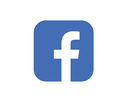With this method, we can simulate your corset before it is produced.
We show you scoliosis exercises for a strong back and train you in the daily use of your corset.
Make an appointment over the phone or send us a message!
Curvature of the spine
What exactly is scoliosis?

Scoliosis (derived from the Greek for curvature) refers to a lateral curvature of the spine with simultaneous rotation of the vertebrae, that can no longer be fully straightened. The curvature and rotation that are characteristic of scoliosis lead to a visible rib and lower back hump, as well as changes in the shoulders and pelvis.
Scoliosis is not a disease, but a symptom and can be classified based on its cause. Idiopathic scoliosis is the most common, accounting for approx. 85% of all cases. The causes of idiopathic scoliosis remain unknown. Neurogenic scoliosis is caused by a known underlying disease (e.g. ICP or myelomeningocele).
Scoliosis can be treated surgically or conservatively (physiotherapy and corset).

It happens again and again that scoliosis is recognized too late because it has not triggered any complaints. Some adolescents and adults complain of back pain as well as tension in the shoulder area. However, the signs of scoliosis become clearer primarily through visible changes in the upper body:
- Different shoulder heights
- Prominent shoulder blade
- Crooked head position
- Unevenly shaped waist
- Unevenly high ribs (rib hump) noticeable during forward bends
- Pain in the back (usually only occurs in adulthood)
Idiopathic or neurogenic?
The most common scoliosis

Idiopathic scoliosis occurs without any apparent cause. Since it does not cause pain during growth, affected persons or parents usually first notice the visible characteristics of scoliosis. Scoliosis can lead to significantly reduced physical performance and back pain in adulthood.
Therapy for idiopathic scoliosis depends on the patient’s age and severity of curvature. Generally speaking, girls between the ages of 10 and 15 are affected more often. However, since scoliosis starts as early as the age of eight and the main growth phase of the spine ends with the onset of the first menstrual bleeding, it is important to start therapy as early as possible. At this young age, the spine is still malleable and can be corrected using an individually adapted corset. Regular physiotherapy and exercises at home are recommended alongside orthotic treatment. Spinal growth is complete by the end of puberty. If the scoliosis has not been treated up to that point, it is likely that the individual will have back pain in adulthood.

Other causes of spinal deformities may include neurological disorders. Any neuromuscular disease during the years of growth can cause scoliosis. In contrast to idiopathic scoliosis, which only becomes noticeable in adolescence, neurogenic scoliosis is already present in infancy and early childhood. It can take on completely individual forms and dimensions.
Neurogenic scoliosis occurs in connection with the following neurogenic diseases:
Spinal deformity requires a therapy concept adapted to the underlying disease.
Treatments for idiopathic scoliosis
How can scoliosis be treated?
Whether and how scoliosis needs to be treated depends on various factors:
- the age of the person affected
- the severity of the scoliosis and
- its cause.
Treatment of scoliosis should begin as early as possible - even if the patient is pain-free! This is because once the spine is fully grown, the curvature of the spine can only be influenced with difficulty or not at all. This makes early detection through regular preventive examinations all the more important, but also through the targeted gaze of parents and teachers.
In children and adolescents, the spine is still growing. Immediately before or during puberty, growth spurts can occur in which the spine deforms. This deformation can occur very suddenly and worsen quickly. In contrast, if an adult is diagnosed with mild scoliosis, it is unlikely that the curvature will worsen.
The spine can be curved to varying degrees. The doctor uses an X-ray to determine the degree of curvature (Cobb angle). Often, a slight deviation of the axis is sufficient. Treatment is then not absolutely necessary. In this case, however, the spine should be checked at regular intervals until growth is complete. This allows early detection of whether the spinal curvature is increasing and the scoliosis should be treated.
In principle, scoliosis can be treated surgically or conservatively, although surgery is only necessary in the case of very severe scoliosis. Conservative treatment methods include physiotherapy and orthopedic devices such as the corset.
Back pain is not an indicator of scoliosis, but it can occur in some cases. If you experience back pain due to your scoliosis, the exact causes must first be clarified. Appropriate physiotherapy exercises, a corset and sports are ways to counteract the pain.
Together with the physiotherapist, scoliosis patients learn practical exercises to correct the spinal curvature through their own use of muscles and correct breathing. Sports and exercise are generally very useful in scoliosis because they strengthen the abdominal and back muscles, which in turn provide support for the spine.
Physiotherapy exercises are usually done without the use of special equipment, so they can be done daily from home.
A little further down, we will introduce you to three different therapy concepts: scoliosis treatment according to Katharina Schroth (Schroth therapy), Vojta therapy and the Dorn method.
An orthopedic corset is a custom-fitted trunk orthosis that applies pressure to specific areas of the spine. Through cavities in the corset, the back actively moves into the correct position. In this way, a corset can correct spinal misalignment and halt the progression of a curvature.
In addition to its support function, the corset is an important therapeutic device. Physical therapy is usually prescribed in addition to corset treatment. The physiotherapists explain to the scoliosis patients, among other things, how the back can be steered into the correct position by special breathing exercises in the corset.
For treatment with a corset to be effective, the orthosis must be worn as much as possible - ideally 23h a day (i.e. also at night). The success of the therapy is checked at regular intervals and the corset is adjusted to the growth of the child or adolescent if necessary.
Surgical treatment of scoliosis is only considered if the spinal curvature is very severe and conservative treatments (physiotherapy, corset) do not lead to any improvement.
Spinal surgery is considered, for example, when the curvature of the scoliosis is over 50° according to Cobb, the curvature is worsening and the internal organs such as the heart or lungs are restricted in their function.
There are different surgical methods, which you should clarify individually with the attending physician or the surgeon. In principle, surgery corrects and stabilizes the shape of the spine as far as possible. In some cases, the spine can also be stiffened during surgery (spondylodesis). The affected areas are then fixed with implants (e.g. screws or rods) so that the vertebral bodies can grow together. These operated vertebral bodies are then no longer movable against each other.
In some cases, a corset is recommended as a post-surgery treatment.
Physiotherapy for patients
with scoliosis
In the series "Scoliosis? Ask Melli!" our physiotherapist Melli explains various technical terms from the field of scoliosis and shows you practical exercises that you can do at home.
Schroth, Vojta and Dorn method
Therapy concepts for scoliosis

- Counteract the progression of spinal curvature
- Improve body awareness
- Improve posture
- Improve breathing function
- Provide support for everyday life
If we provide you with a corset, our physiotherapists will accompany you and give you helpful tips for therapy in your home town.

Schroth therapy requires a high degree of self-motivation and dedication on the part of the scoliosis patient. In order to be successful with therapy, you must carry out individual exercises on your own on a daily basis. These should be developed by trained Schroth therapists in private practice or during your stay at a rehabilitation center. Your own body awareness or a mirror can be used at home for correction. It is your responsibility to ensure that the scoliosis exercises are carried out diligently. The home exercise routine should be monitored at regular intervals by the attending therapists.

The Vojta method is based on neurophysiological principles and uses reflexes that are anchored in the brain of every human being. The therapy starts by bringing patients to a fixed starting position and then pressure is used to activate reflexes in specific zones. The movement patterns cause extension and straightening of the spine, resulting in correction of all segments of the spine.
A Vojta therapist establishes a daily program that can be performed at home with only the help of one parent. The program should be corrected and adjusted regularly.

Displaced vertebral bodies are detected using the thumb with the aid of Dorn therapy. The affected vertebrae (or sections of affected vertebrae) are then brought towards the optimal position by gently pressing with the thumb. This method can be surprisingly effective at treating scoliosis. Nonetheless, the Dorn method can only be used as a supplement to a different therapy concept, as this method does not include the active training of the affected muscle groups needed to sustain a corrected spine.

The corset
The corset is an orthosis that corrects your spine. We will inform you about the different types of corset, the precise care process and interesting therapy options.

Let yourself be inspired! We accompany many interesting patients during their Pohlig appointment and give you personal insights.

For those who want to delve even deeper into the matter, we have a suitable video for almost every supply area.

Take a look behind the scenes at Pohlig and find out about diagnoses and our innovative aid solutions!


